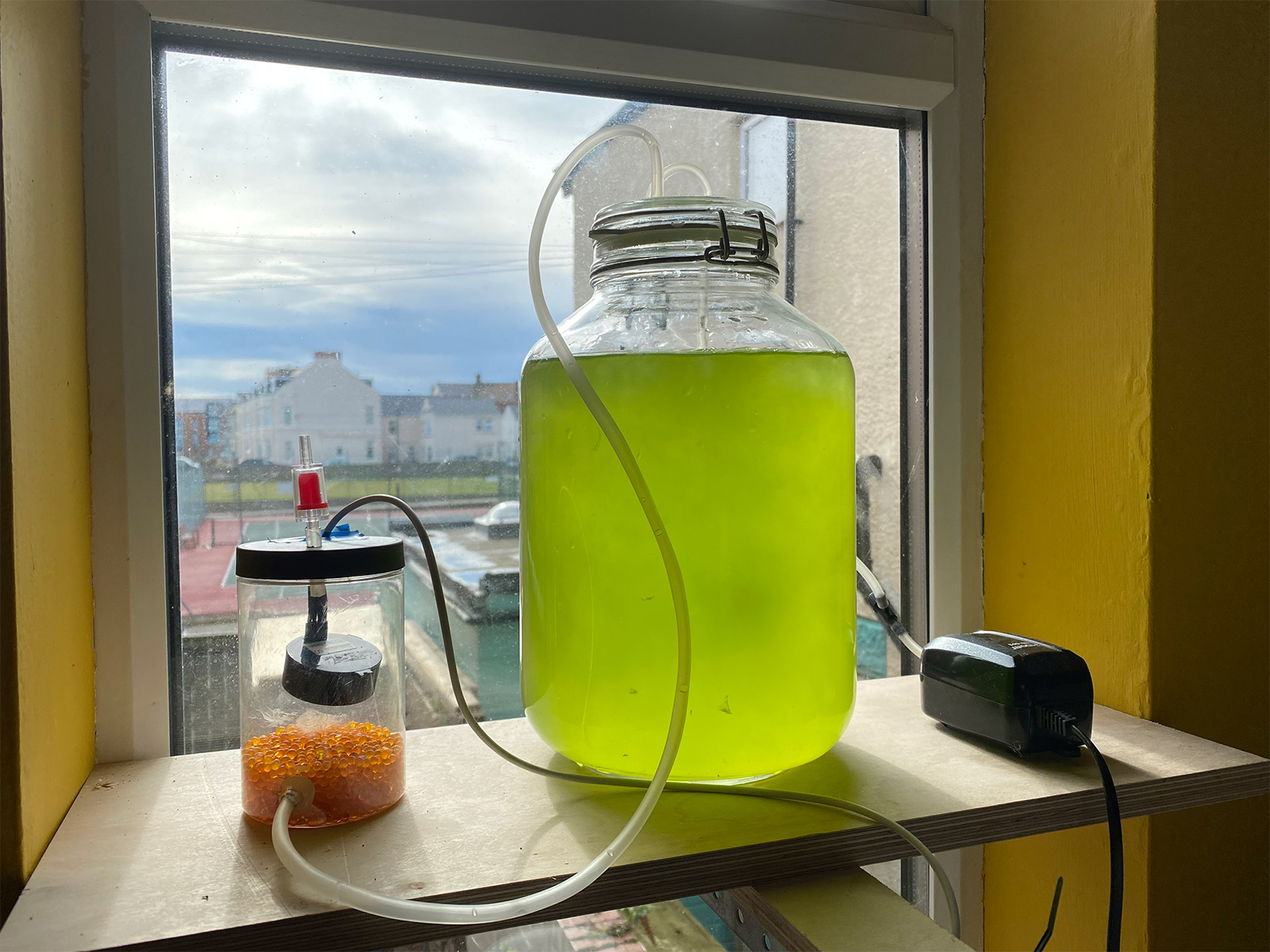
This project presents an ongoing series of experiments to create connections with phytoplankton and the role these microscopic marine plants have in sequestering carbon for the other inhabitants of this planet.
Phytoplankton are a vital part of the planet’s ecology, absorbing carbon dioxide from the atmosphere through photosynthesis, providing the basis for food webs and forming an intrinsic part of the earth’s carbon cycle. Each year these tiny organisms remove more than 30 billion tonnes of carbon from the atmosphere as well as producing an estimated 70% of the oxygen in the atmosphere, around double that of all the rainforests on earth together. Phytoplankton’s effects are interwoven with the planets ecosystems and without it, the planet would be uninhabitable.
This capacity to absorb carbon dioxide from the atmosphere has made phytoplankton a subject for research into how it can be used to reduce the effects of climate change; from carbon capture and storage systems to producing biofuels.
Planktochrome Experiments makes visible phytoplankton’s interrelationships with the places that we inhabit and its effects on carbon dioxide levels, and creates a space to discuss how expanding beyond exclusively human thinking is vital in reversing anthropogenic climate change
Planktochrome 1.0:

Nanochloropsis plankton culture, sea water, air pump, silica beads, Cozir carbon dioxide sensor, Raspberry Pi computer with camera module, python programming
Situation: A window sill in Whitley Bay, North East UK.
Air is bubbled through a culture phytoplankton providing it with Carbon Dioxide (CO2) to photosynthesise. The plankton absorbs the co2 from the air and using the carbon to store energy, grow and reproduce. The activity of the phytoplankton is shared with an audience through an Instagram account, @planktochrome, where daily posts that show the colour of the phytoplankton and the current carbon dioxide level of the air in the apparatus.



This experimental apparatus creates a live space that is constantly being formed in which the colour and CO2 levels fluctuate throughout the day with changes in the environmental conditions and the activities of the other inhabitants in the house*.
The resulting data pairs of colour and CO2 level are continually being formed through a complex interweaving of plankton, photosynthesis, changes in sunlight, nutrients in the water, the number of people in the house and the things they are doing. This information has also been captured in daily graphs that are produced that show the changing colour and level of carbon dioxide.
*During the COVID pandemic carbon dioxide levels became a proxy measure for human activity in interior spaces. CO2 monitors were used in classrooms and public places to indicate that fresh air should be introduced and control ventilation systems.
Graph of the last 24 hours of data
Colour and carbon dioxide data are collected in this experiment throughout the day and the data collated in bar charts that become a record of the plankton’s photosynthesis. It is visible from these graphs that as the sun rises and photosynthesis begins the amount of carbon dioxide in the air decreases and increases again at the end of the day. Other trends of the occupation of the house are visible with a notable peak around 8am that coincides with getting people to school and a similar rise as people return home around 4pm.
Human activity has dramatically increased Atmospheric carbon dioxide levels which now exceed 400 parts per million (ppm) the highest that they have been for 3.6 milllion years. In this apparatus a carbon dioxide sensor monitors the changing levels of carbon dioxide with the growth of phytoplankton and changing environmental conditions


Future Project Developments:
- Host the plankton in new contexts to open new spaces for dialogues around atmospheric carbon dioxide, the materiality of the sea, non-human actants and climate change.
- Build connections and conversation with researchers and industries connected with Phytoplankton.
- Create a distributed network of interconnected Planktochrome apparatus connected through a shared online platform.
- Develop the Phytochrome for physical exhibition as well as online. The scale and style of installation would adapt to context but could include larger panel shaped tanks, site specific installations around windows, multiple vessels. Continual printing of planktochromes could creates an expanding montage that records the activity of the phytoplankton for the duration of the exhibition.
- Print on demand Planktochromes. Through the online platform people could request a Planktochrome from a certain time and date and a printed version could be created from the project database.